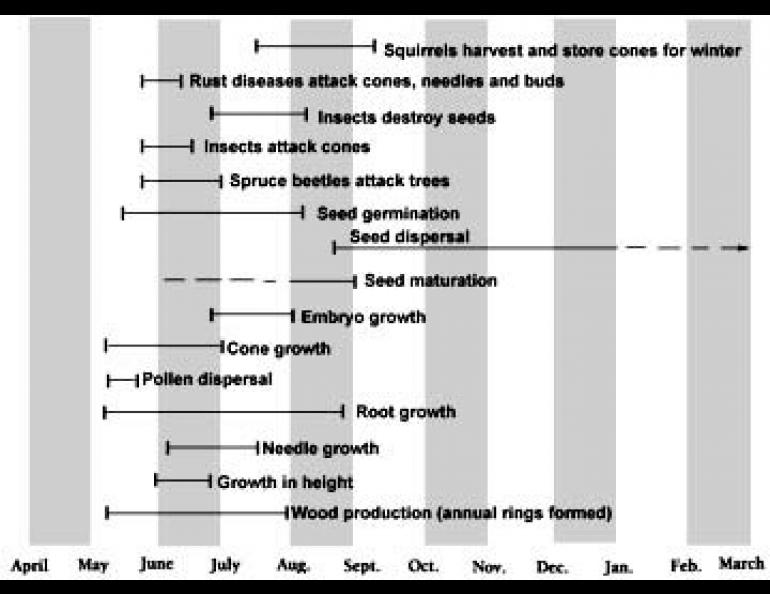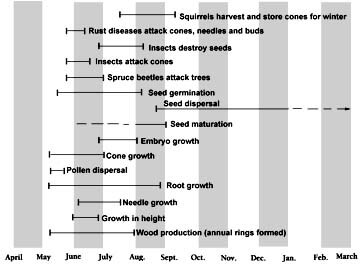
The Life of A White Spruce In The Subarctic
The forested area of interior Alaska coincides fairly closely with the range of Picea glauca or white spruce. This majestic tree is one of the most commercially important species in the Interior, it is valued for the houselogs, firewood, and other products that are derived from it. In fact, it has been and still is the most important tree in the subsistence life of the Alaska Athabascans, who use all parts of the tree including the roots and resin. In addition, white spruce forests are important habitat for a variety of animal species.
Visitors and even local residents are sometimes surprised at the size to which white spruce grow in the Interior. In terms of overall bulk (some others are taller), the current state champion, located near Fairbanks, is about 32 inches in diameter and 105 feet tall. Even larger dead trees have been found. The current U.S. champion is located in northern Minnesota and is 36.9 inches in diameter and 128 feet tall. The largest white spruce in North America grow in Canada where trees greater than 40 inches thick and 150 feet tall can be found.
The conditions under which this tree thrives in the Interior are sometimes so demanding that it might seem implausible that it survives at all. That it does is due to the fact that in some ways its annual growth cycle is well-adapted to our growing season.
In the 1960s, forester Bob Gregory made seasonal growth measurements of Alaskan white spruce at the same times that another forester measured tree growth at the extreme opposite end of the white spruce's range in Massachusetts. It was found that, over the course of a year, trees at both locations produced the same amount of wood, but that Alaska trees produced the wood in one-half the time required by those in Massachusetts. In other words, subarctic trees are able to take advantage of Alaska's growing season by completing growth quickly during the long summer days.
Alaskan trees are not as well adapted to conditions in the North when it comes to the production of seeds. Cones reach full size by June 1 in the Fairbanks area and somewhat later at higher elevations. The embryo (a small tree in the making) reaches full size about one month later. The finer stages of seed maturation--changes in the chemical composition of the seed that are important to the vigor of the embryo as it begins its struggle to become a mature tree--take place right up to the time that seed is dispersed. At higher elevations (for example near Denali Park) this mean that seeds do not mature even though the cones are fully developed. Thus the seeds are not able to produce seedlings and won't be able to fulfill their intended purpose of producing a new tree.
Other hazards such as insects, animals and disease continually threaten the roots, needles and bark of the white spruce. It is a measure of their durability and adaptability that these trees have been able to survive and reproduce in the face of so many menacing factors.





